The Great American Eclipse is 100 days away, and scientists are ready
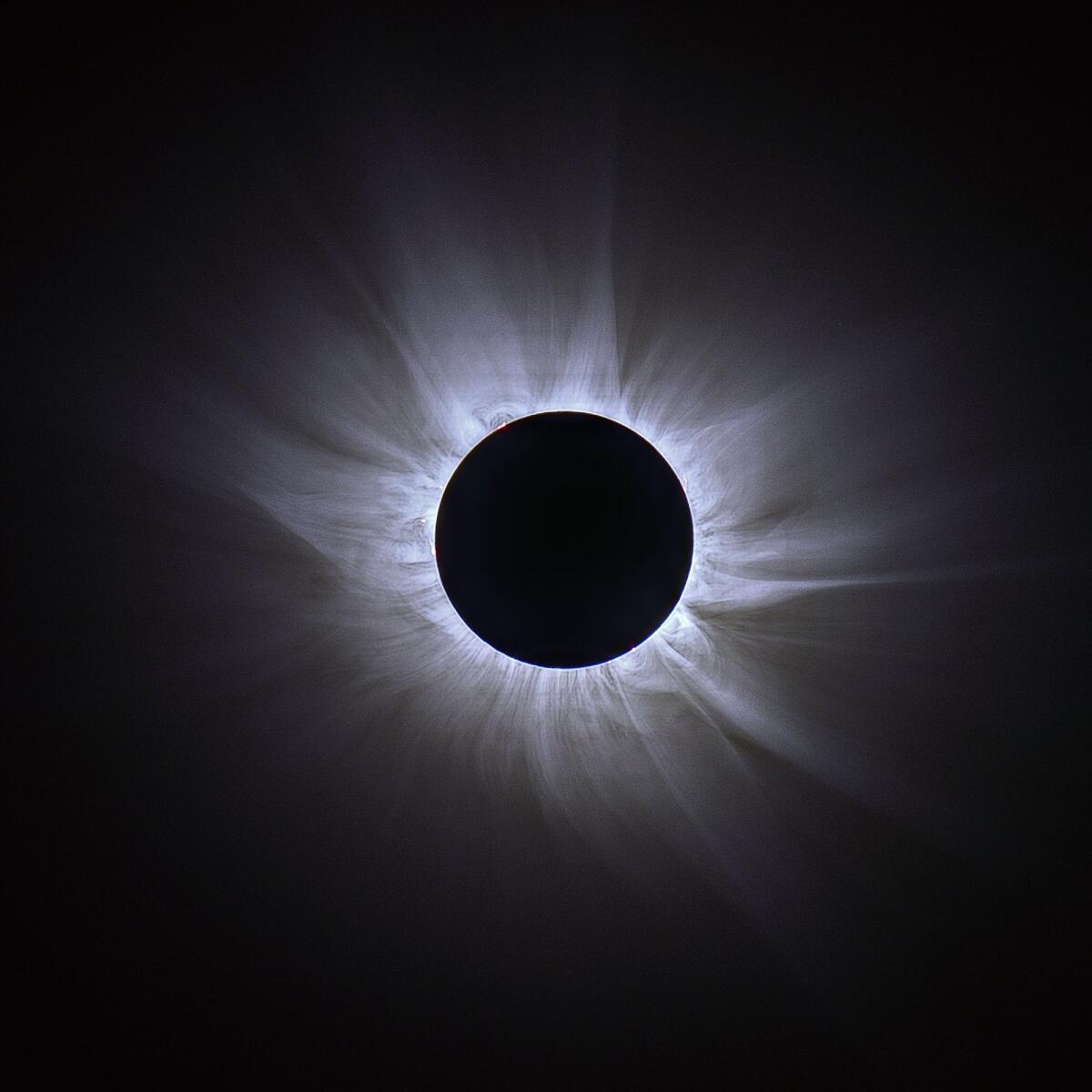
This summer, darkness will fall across the face of America.
Birds will stop singing.
Temperatures will drop.
Stars will become visible in the daytime sky.
In about 100 days, a total solar eclipse will sweep across the continental United States for the first time since 1918. Astronomers are calling it the Great American Eclipse.
For the amateur sky-watcher, a total eclipse presents a rare opportunity to witness a cosmic hiccup in our day-night cycle.
For solar astronomers, however, the eclipse offers something else: three minutes (give or take) to collect as much data as possible about the sun’s usually hidden outer atmosphere.
Researchers have been anticipating the event for years.
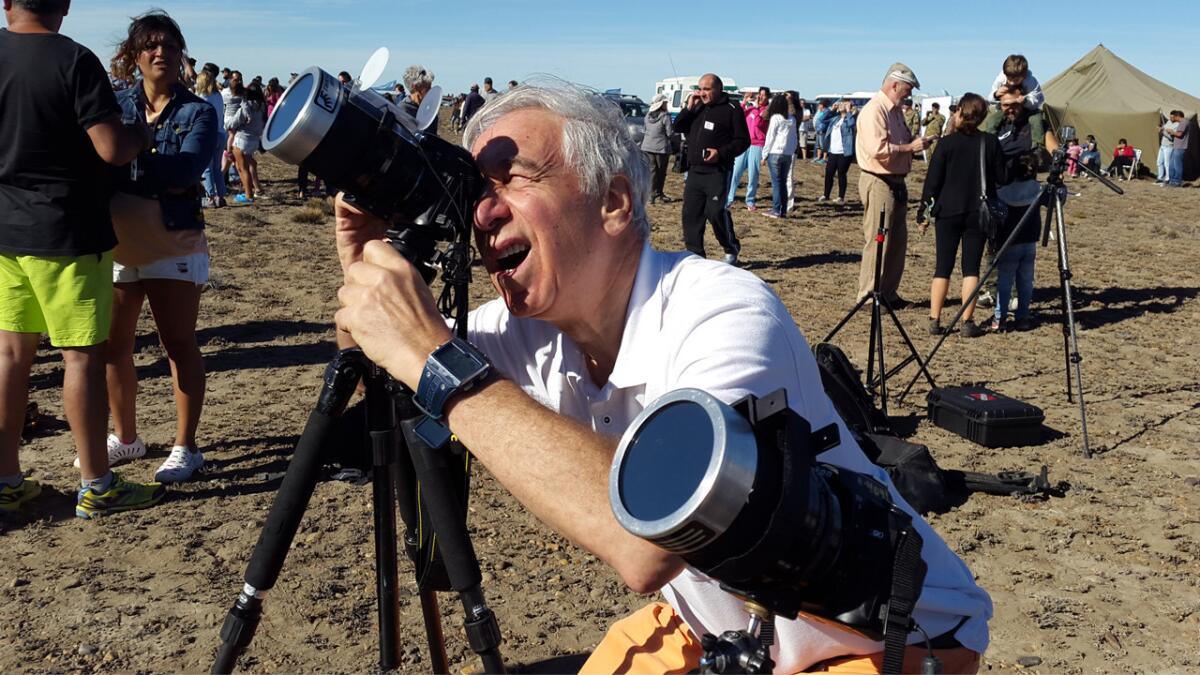
Some will take measurements from the sky; others have engaged vast networks of citizen scientists to track the eclipse as its shadow moves across the ground. Ultimately, they hope their findings will tell them more about the sun’s magnetic field, the temperature of its outer atmosphere and how energy moves through the star and out into space.
Doing science during a total eclipse may be exciting, but it can also put you on edge. No matter how carefully you plan, nature may conspire against you with something as trivial as a cloud momentarily passing through the wrong patch of sky.
“I’ve had those experiences and it’s heartbreaking,” said Shadia Habbal, who studies the solar wind at the University of Hawaii’s Institute for Astronomy.
Not just any eclipse
If you remember donning those paper eclipse glasses to watch as the moon appears to take a bite out of the sun, you may think you have seen a total eclipse. But you haven’t.
What you witnessed was a partial eclipse, a phenomenon as different from a total eclipse as day is from night. Literally.
The sun is so bright that even when 99% of it is covered by the moon, the remaining 1% is still bright enough to make the sky blue, said Jay Pasachoff, an astronomer at Williams College in Massachusetts who has seen 33 total eclipses and 32 partial eclipses. During a total solar eclipse, the moon completely obscures the face of the sun, causing the daytime sky to darken by a factor of 1 million.

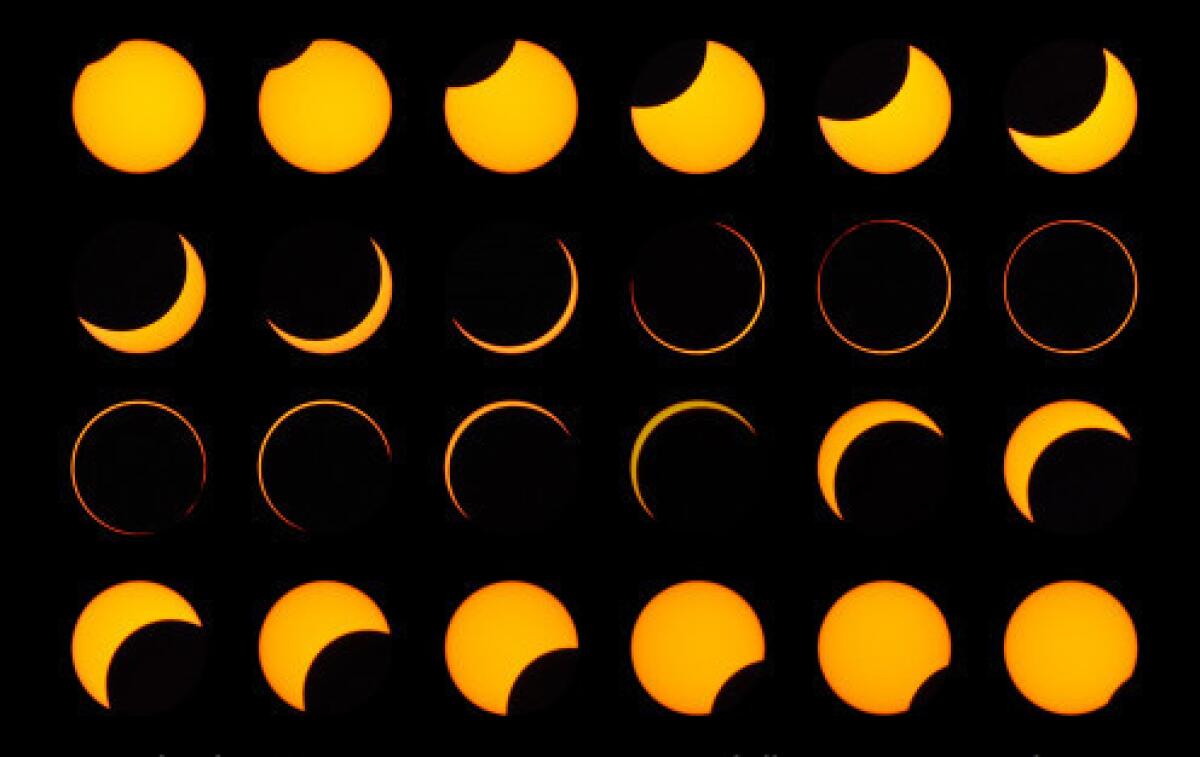
This moment of totality lasts only a few minutes. Those who have seen it say it’s unlike anything they’ve ever experienced.
“It’s a really unique feeling, standing in the shadow of the moon,” said Matt Penn, an astronomer at the National Solar Observatory in Tucson who has witnessed two total eclipses. “Crickets start to chirp. Birds start to roost. Chickens do weird things. And it’s all in reaction to the strange light.”
A total solar eclipse occurs somewhere on Earth about once every 18 months, and it can happen absolutely anywhere. That means most eclipse-chasers have to travel far from home to see one for themselves.
On Aug. 21, however, what’s known as the path of totality will cut a 60-mile-wide arc across the United States, beginning in Oregon at 10:15 a.m. local time and ending in South Carolina about an hour and a half later.
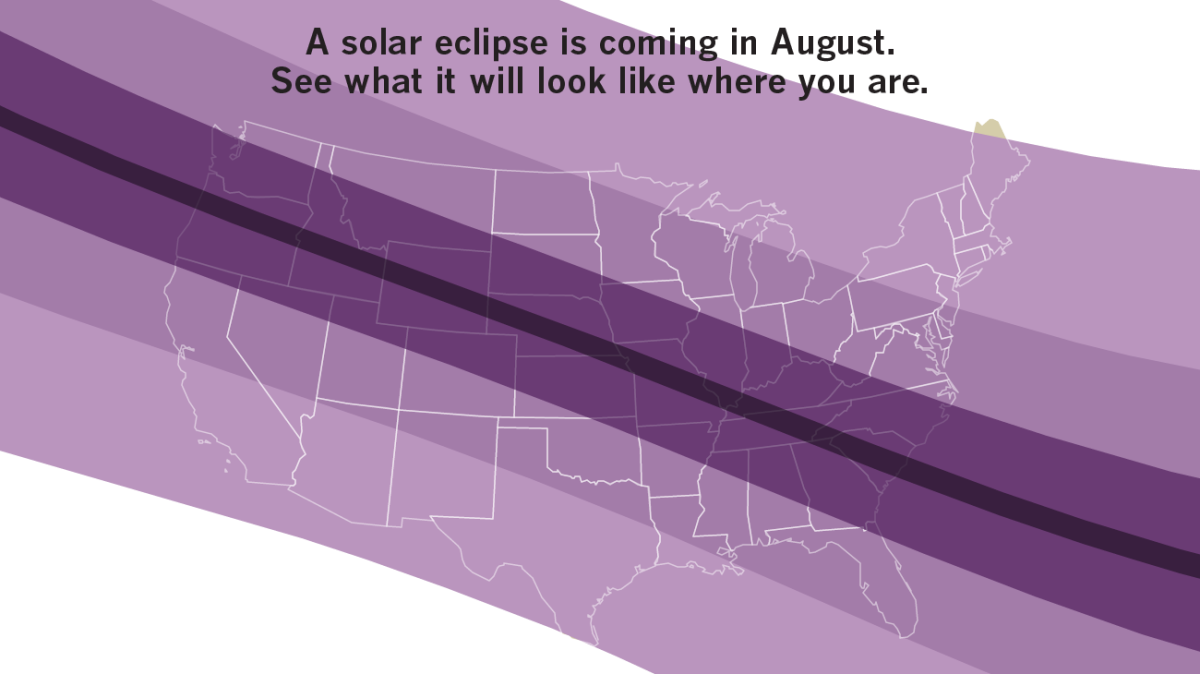
Experts estimate that 11 million people won’t have to travel at all to observe the total eclipse, and an estimated 76 million more will be within a 200-mile drive of it.
Because of this unusual accessibility, it will probably be the most-viewed eclipse of all time.
Scientists expect it will be the most-studied eclipse of all time as well.
Solar science
Most researchers plan to study the sun’s outer atmosphere, or corona. This is a vast region of superheated gas held in place by the sun’s magnetic field.
Under normal circumstances, we can’t see the corona from the ground because it is overwhelmed by the brightness of the photosphere, the sun’s main disk. But with the photosphere blocked, the corona will become the main event in the sky — a pale, spiky halo of streamers that appears to radiate from the blacked-out solar surface.
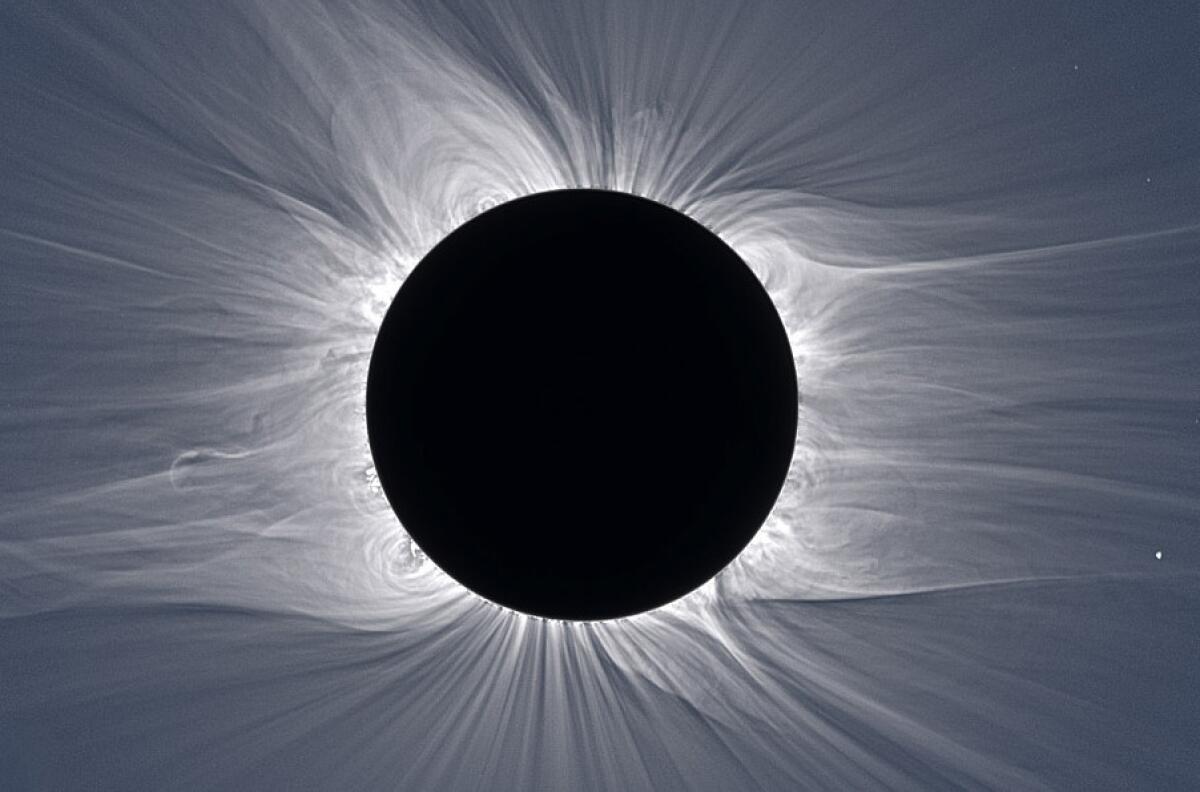
Composite images and measurements made during other eclipses reveal that the corona is composed of a complex swirl of gases much hotter than what you’d find on the surface of the sun. The surface is a toasty 6,000 degrees Kelvin (more than 10,000 degrees Fahrenheit), but the temperature of the corona averages 1 million degrees Kelvin (1.8 million degrees Fahrenheit).
“The fundamental question we are asking is, what is causing the atmosphere to heat up like that?” said Habbal. “This is one of the scientific mysteries regarding the sun that remains unanswered.”
But not for lack of trying. Habbal has led 14 eclipse expeditions since 1995, traveling as far as the Arctic.
This year, she and her colleagues will make the most of the Great American Eclipse by viewing it from five distinct sites from Oregon to Nebraska.
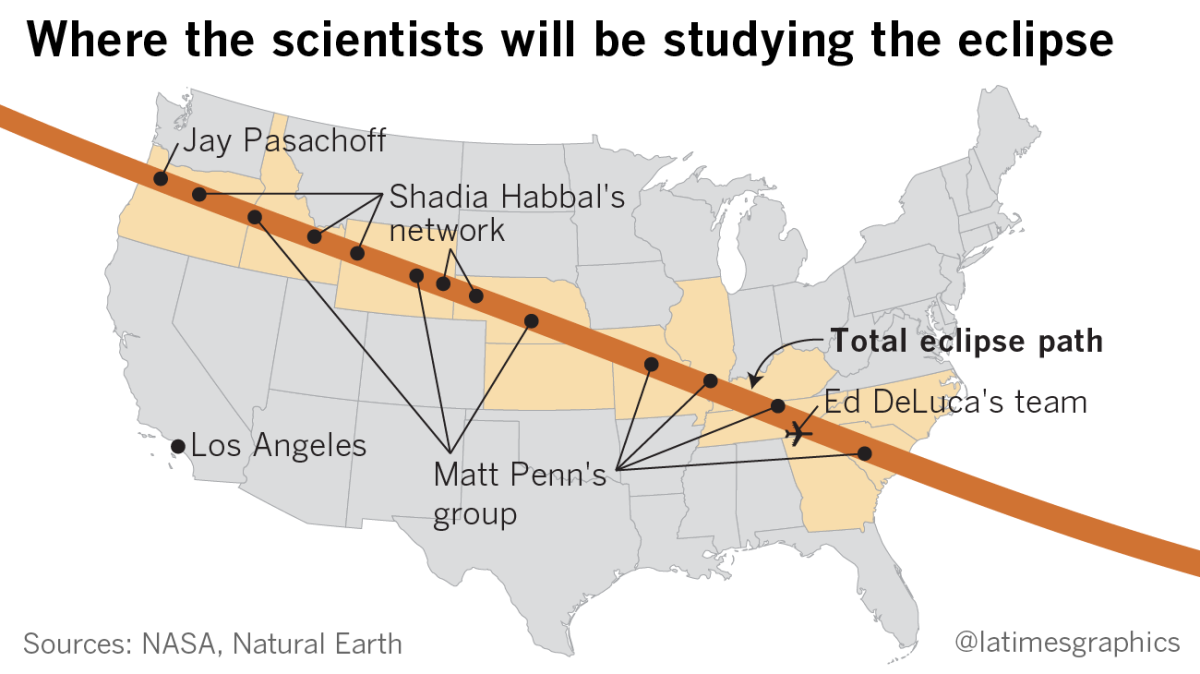
Each group will wield custom-made cameras with long focal lenses that can capture images of the corona in the spectrum of visible light. The teams will also take spectra measurements to see which elements are in the corona and how hot they are.
Any answers Habbal comes up with would shed light on the processes that shape not only the solar atmosphere, but the atmosphere of other stars that are similar to the sun, she said.
Observing from the air
On the other side of the country, researchers from the Harvard-Smithsonian Center for Astrophysics are planning to study the corona from a plane flying at 49,000 feet.
The group, led by solar physicist Ed DeLuca, is building an instrument that will allow them to examine the solar atmosphere in infrared wavelengths. Their ultimate goal is to better understand the magnetic fields in this outer region of the sun — in part because this is where coronal mass ejections originate.
“Measuring these magnetic fields is really useful for understanding how energy is stored in the corona and when we expect it to be released,” DeLuca said. “Once we understand that, we can make better space weather predictions.”
A coronal mass ejection sends millions of tons of the sun’s material hurtling through space. If a well-aimed one hits Earth, it can mess with the planet’s magnetosphere and inflict damage on satellites, astronauts and even the power grid.
Water in Earth’s atmosphere can interfere with infrared measurements, but the higher up in the atmosphere you go, the less water you’ll find. At an altitude of nearly 50,000 feet, the researchers say, their instruments will be able to measure 100 times more infrared light coming from the corona than if they were at sea level.
DeLuca is hoping the weather won’t be a problem. The flight is happening over Tennessee, where thunderstorms have been known to go quite high, but they usually don’t develop until later in the afternoon.
“The flight’s at noon, so we should be OK,” he said.
This isn’t just any plane. The modified Gulfstream GV jet is owned by the National Science Foundation and has been turned into a flying laboratory.
On the day of the eclipse, the researchers will have to make sure the light from the solar atmosphere comes through a 6-by-9-inch window on the right side of the plane. Then it will hit a telescope that feeds a spectrograph enclosed in a cryogenic vacuum chamber positioned on the floor of the cabin.
The plane will fly along with the shadow of the moon, giving the scientists an additional minute of observing time. That may not sound impressive, but every minute counts when you have less than five minutes to collect data.
Greeting the eclipse with an array of instruments
Pasachoff, who is recognized among eclipse chasers as the person who has seen more eclipses than anyone else on the planet, started planning his Great American Eclipse observations more than four years ago.
After traveling to Ternate in Indonesia, Svalbard in the Norwegian Arctic archipelago and Gabon in West Africa to observe these cosmic events, he said it’s going to be quite a change to see an eclipse here in the U.S.

His team of a dozen astronomers will be stationed near Salem, Ore., a site they selected because the region has an excellent chance of clear skies in August. (Knock on wood.)
Pasachoff and his collaborators plan to use two spectrometers and several telescopes with high-resolution imaging capabilities to measure the different gases in the solar atmosphere, study the dynamics of the corona, determine how hot it is, and compare its overall shape to scientists’ predictions.
There are other observing plans afoot as well. Penn, of the National Solar Observatory, is leading an ambitious effort to watch how the corona changes over the full 90 minutes that the eclipse will be visible somewhere in the U.S. He calls it the Citizen CATE Experiment (short for Continental America Telescopic Eclipse).
On the big day, 70 volunteers will use specially designed telescopes to film the corona for the roughly 2 minutes of totality in their area. Those images will be stitched together into a movie.

Penn said his team’s primary focus will be to measure the velocity of the solar wind, the outflow of particles coming from the sun.
“These particles are accelerated at high speeds, but we don’t know how that acceleration works,” he said.
Another group from UC Berkeley’s Space Sciences Laboratory has partnered with Google to collect images from more than 1,000 citizen scientists. By combining them into a “megamovie,” they hope to see how the corona changes over time.
Amidst all this activity, the scientists are budgeting a little time to marvel at the rare intersection of our daily lives and the mechanics of our solar system.
“It’s a cosmic event we are witnessing and a reminder of how puny we are,” Penn said.
Sign up for Essential California
The most important California stories and recommendations in your inbox every morning.
You may occasionally receive promotional content from the Los Angeles Times.







